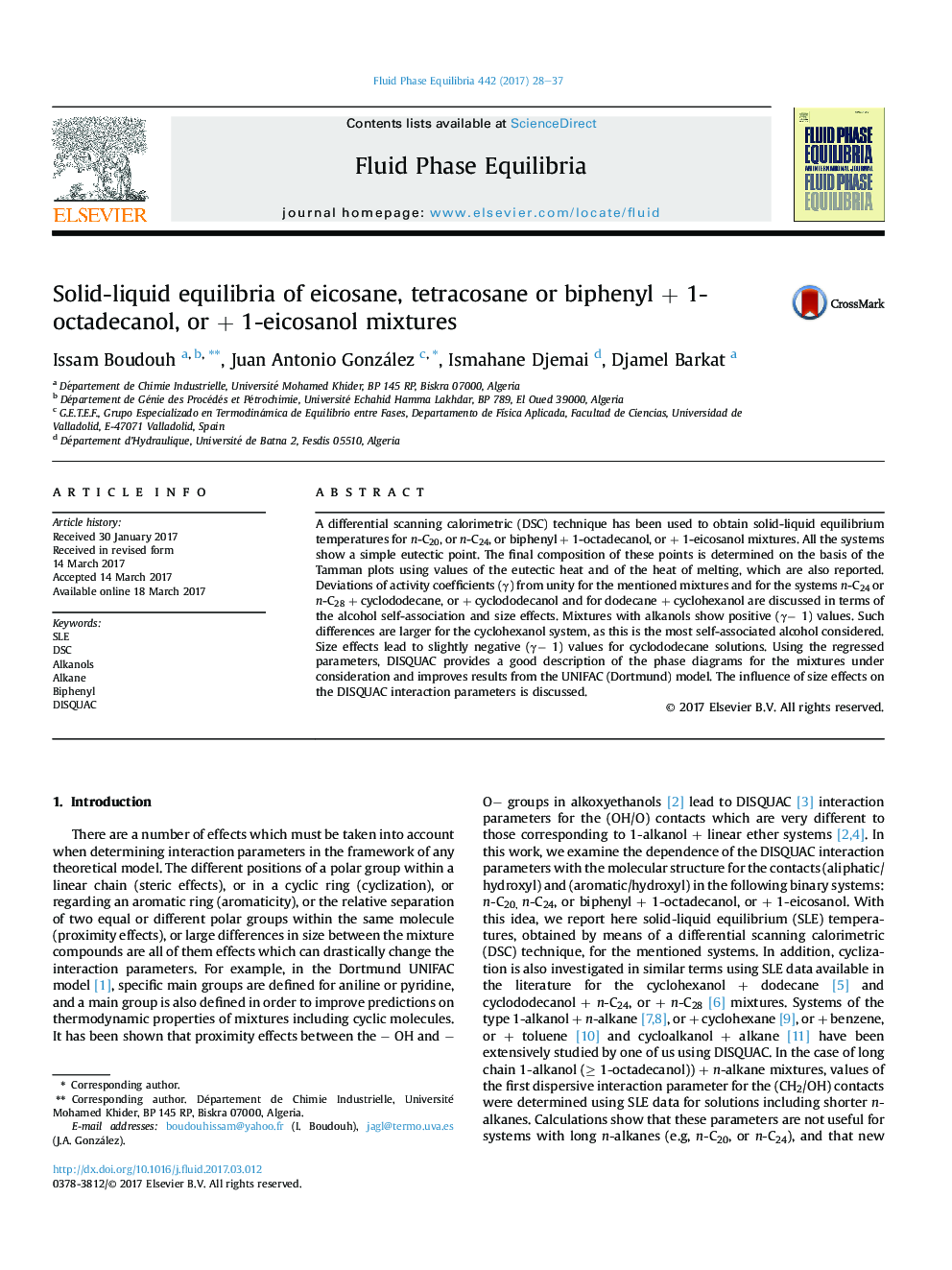| Article ID | Journal | Published Year | Pages | File Type |
|---|---|---|---|---|
| 6473282 | Fluid Phase Equilibria | 2017 | 10 Pages |
â¢Phase diagrams for n-C20, or n-C24 or biphenyl + 1-octadecanol, or + 1-eicosanol mixtures are reported.â¢Data from the literature for the systems alkane + cycloalkanol, or + cyclododecane are also examined.â¢All the mixtures with alkanols show positive (activity coefficientâ 1) differences.â¢Larger differences are observed for the n-C12 + cyclohexanol mixture as the alcohol is more self-associated.â¢DISQUAC describes well the phase diagrams of the studied systems.
A differential scanning calorimetric (DSC) technique has been used to obtain solid-liquid equilibrium temperatures for n-C20, or n-C24, or biphenyl + 1-octadecanol, or + 1-eicosanol mixtures. All the systems show a simple eutectic point. The final composition of these points is determined on the basis of the Tamman plots using values of the eutectic heat and of the heat of melting, which are also reported. Deviations of activity coefficients (γ) from unity for the mentioned mixtures and for the systems n-C24 or n-C28 + cyclododecane, or + cyclododecanol and for dodecane + cyclohexanol are discussed in terms of the alcohol self-association and size effects. Mixtures with alkanols show positive (γâ 1) values. Such differences are larger for the cyclohexanol system, as this is the most self-associated alcohol considered. Size effects lead to slightly negative (γâ 1) values for cyclododecane solutions. Using the regressed parameters, DISQUAC provides a good description of the phase diagrams for the mixtures under consideration and improves results from the UNIFAC (Dortmund) model. The influence of size effects on the DISQUAC interaction parameters is discussed.
Graphical abstractDownload high-res image (72KB)Download full-size image
